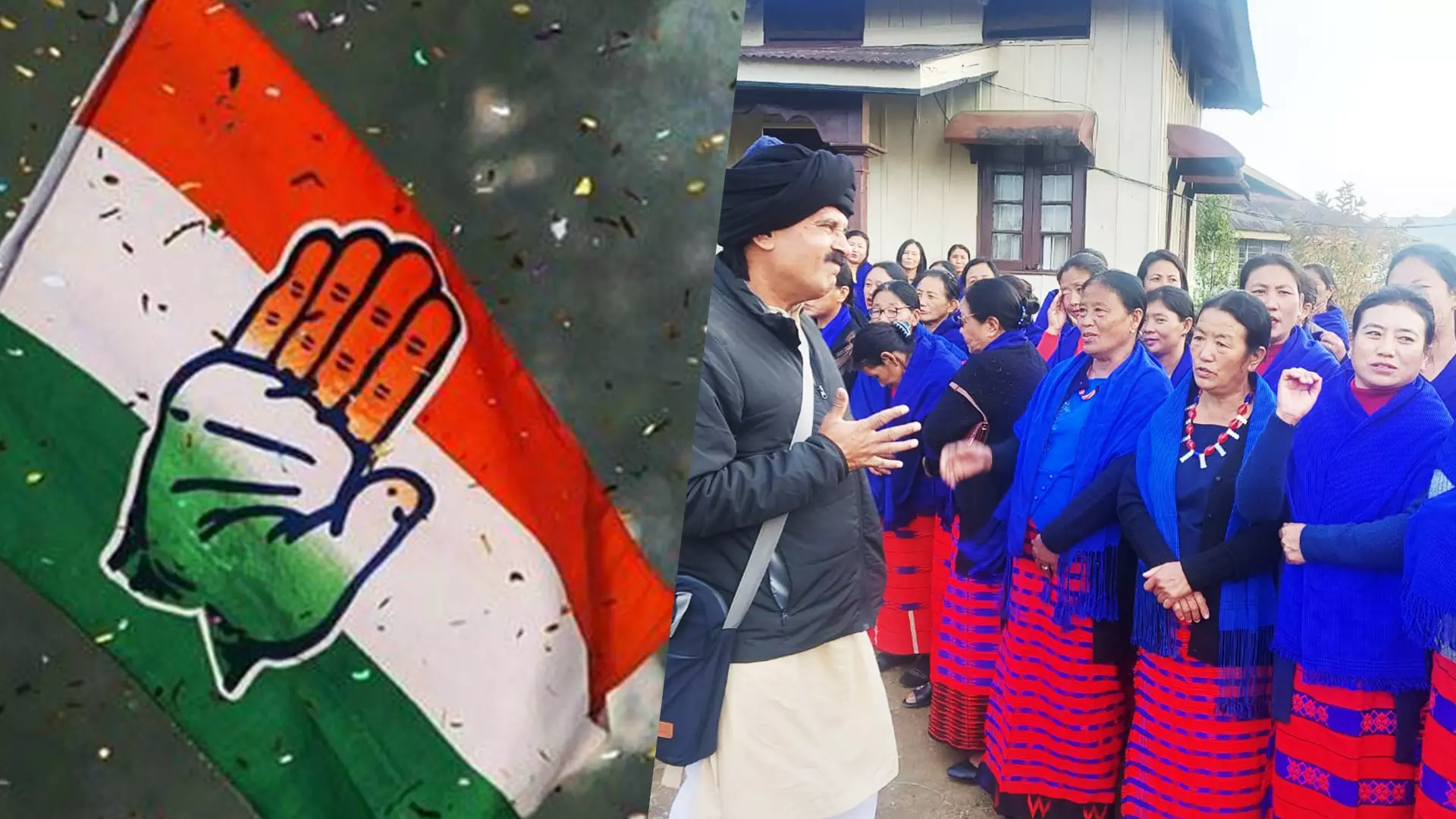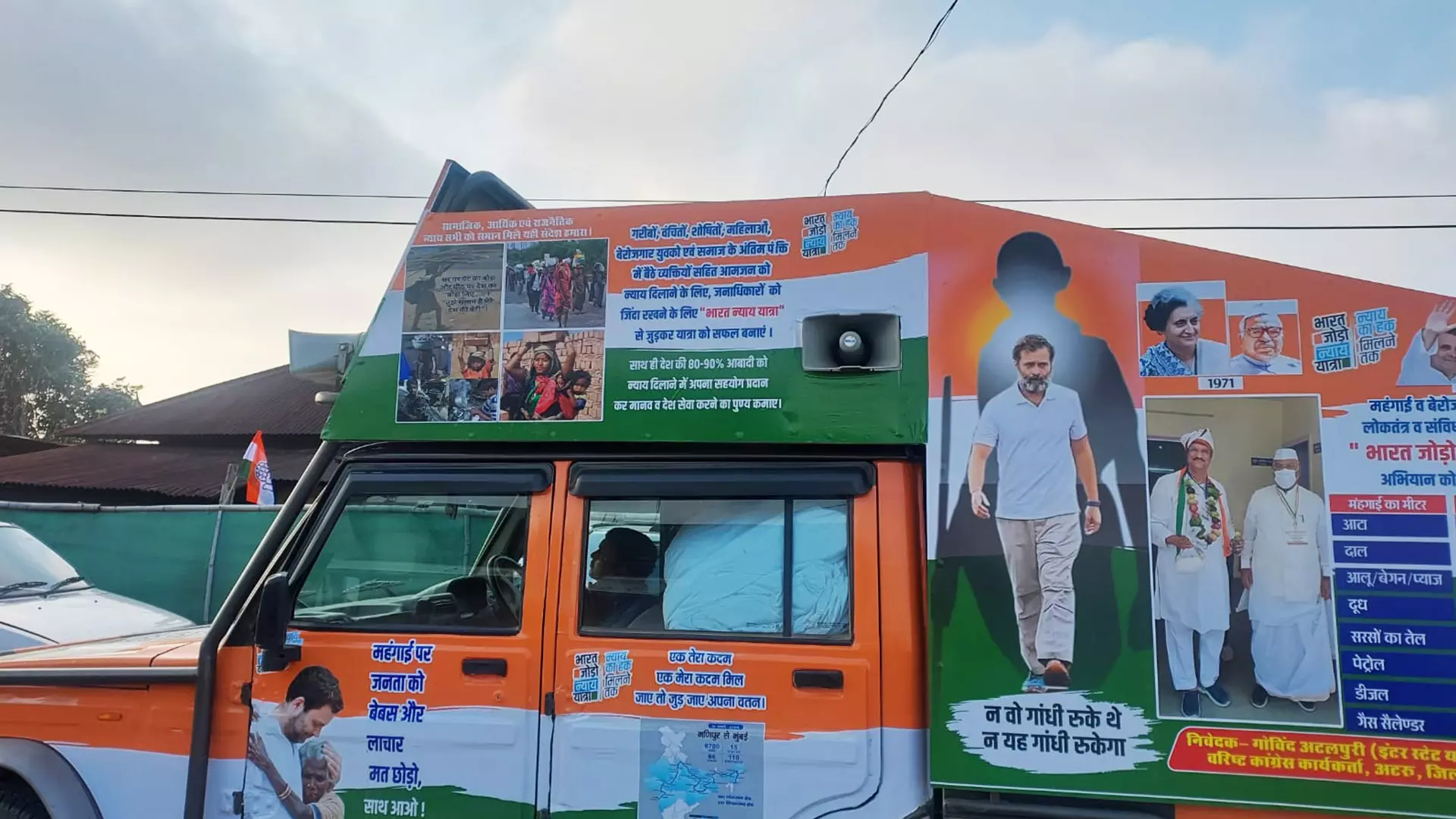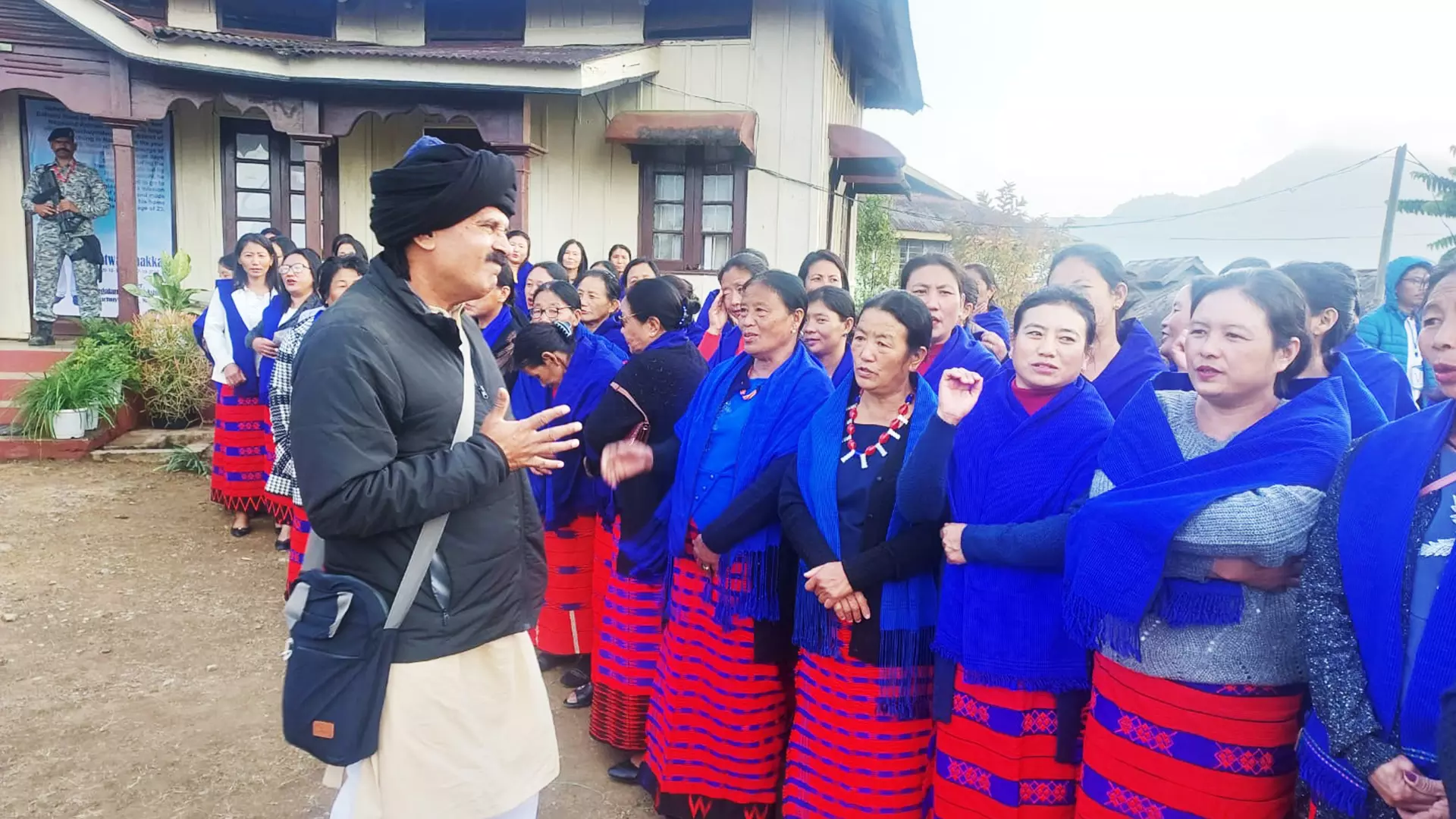
- Home
- India
- World
- Premium
- THE FEDERAL SPECIAL
- Analysis
- States
- Perspective
- Videos
- Sports
- Education
- Entertainment
- Elections
- Features
- Health
- Business
- Series
- In memoriam: Sheikh Mujibur Rahman
- Bishnoi's Men
- NEET TANGLE
- Economy Series
- Earth Day
- Kashmir’s Frozen Turbulence
- India@75
- The legend of Ramjanmabhoomi
- Liberalisation@30
- How to tame a dragon
- Celebrating biodiversity
- Farm Matters
- 50 days of solitude
- Bringing Migrants Home
- Budget 2020
- Jharkhand Votes
- The Federal Investigates
- The Federal Impact
- Vanishing Sand
- Gandhi @ 150
- Andhra Today
- Field report
- Operation Gulmarg
- Pandemic @1 Mn in India
- The Federal Year-End
- The Zero Year
- Science
- Brand studio
- Newsletter
- Elections 2024
- Events
- Home
- IndiaIndia
- World
- Analysis
- StatesStates
- PerspectivePerspective
- VideosVideos
- Sports
- Education
- Entertainment
- ElectionsElections
- Features
- Health
- BusinessBusiness
- Premium
- Loading...
Premium - Events

From a megaphone mounted on a decked-up jeep, the Congress Seva Dal played Ramdhun immortalised by Mahatma Gandhi as BJP supporters raised slogans of “Jai Shri Ram” in a bid to outshout the ‘Raghupati Raghava Raja Ram’ humming at Rahul Gandhi’s moving cavalcade in Assam’s Sonitpur district.It was the eighth day of the Congress leader’s Manipur to Maharashtra Bharat Jodo Nyay...
From a megaphone mounted on a decked-up jeep, the Congress Seva Dal played Ramdhun immortalised by Mahatma Gandhi as BJP supporters raised slogans of “Jai Shri Ram” in a bid to outshout the ‘Raghupati Raghava Raja Ram’ humming at Rahul Gandhi’s moving cavalcade in Assam’s Sonitpur district.
It was the eighth day of the Congress leader’s Manipur to Maharashtra Bharat Jodo Nyay Yatra and was the eve of the consecration ceremony of Ram Mandir in Ayodhya on January 22.
Amidst the temple frenzy gripping the Hindu-majority nation, both adversaries invoked the same deity but with undertones that were poles apart.
Raghupati Raghav Raja Ram Patita Pavan Sitara… Ishwar Allah Tero Nam, Sabako Sanmati De Bhagawan played out by Seva Dal was a reminder that Ishwar and Allah are no different from one another.
This was in contrast to the BJP’s assertive ‘Jai Sri Ram’ slogans claiming Hindu resurgence, a steppingstone to its goal of building a Hindu-first nation.
In the battle of narratives against the BJP and its ideological fountainhead, the Rashtriya Swayamsevak Sangh (RSS), the Congress is falling back on its century-old only cadre-based frontal organisation — the Seva Dal.
“We are taking Congress’s history and philosophy to the people, and also telling them what the RSS-BJP stands for. It’s the battle of ideology that we have waged,” Seva Dal chairperson Lalji Desai told The Federal.
The Seva Dal has opted for music and melody to put its point across. Apart from Ramdhun and patriotic songs, the Seva Dal has a series of jingles it has pulled out of it creative armour to take potshots at its adversary and for instant connect with people.
Wo dande se torenge, ham jhande se jorenge, unke haat mein danda hein, hamare haat mein jhanda hein… Mere desh ka jhanda tiranga, nahin chalega duranga.
(They are using the baton — referring to RSS' stick — to divide. We are using the flag to join and bring together. They have the baton in their hands. We are carrying the Tricolour. My country’s flag is the Tricolour, the saffron flag won’t be accepted here.)
The message, Desai says, in the above jingle is “Yen dande aur jhande ki ladai hai. Jhanda hamara tiranga hain, soch tirangi hain. Unko soch durangi hain, isiliye unka jhanda bhi doranga hain. (This is an ideological war between non-violence and violence. Our flag represents non-violence while their stick is a symbol of violence. Like the three colours of our national flag, we believe in diversity whereas they are two-faced).

A vehicle part of Rahul Gandhis Nyay Yatra cavalcade which played Ramdhun. Photos: Samir K Purkayastha
Thus goes another jingle, conveying Congress’s glorious legacy of fighting the British forces for India’s freedom: Pahle lade the goro se, aab lorenge choro se (First we fought the British forces, now we will fight the divisive forces).
“Without mincing any words, we tell the people that when our leaders were fighting against the British colonialism, their (RSS-BJP) ancestors, were busy serving the British,” Desai said, emphasising that history needs to be reiterated before the masses again and again to debunk the fake narratives propagated by the saffron brigade.
Seva Dal’s task, however, is easier said than done. Taking on the collective might of the RSS-BJP combine on the ground is a daunting task, particularly because of their sheer influence. The BJP is now the largest political party in the world with over180 million members. In addition to that, the RSS has about six million members, having around 60,000 shakas (branches).
RSS’s ideological and organisational support has been instrumental in securing BJP’s victory over the years. Political experts often point at this fundamental mismatch between the BJP and the Congress organisational structures.
To rise to the challenge, the Congress is now in the process of revamping the Seva Dal after keeping it dormant for years.
But Seva Dal wasn’t always week. At one point, it exercised considerable influence.
The Seva Dal was founded by Narayan Subarao Hardikar after the Kakinada session of the Congress in 1923. It was initially named as Hindustani Seva Mandal. The Congress Working Committee in 1931 rechristened the outfit as the Congress Seva Dal, making it the party’s main volunteer organisation. The organisation focused on outreach to three categories of people: children, adolescents and adults, and required its members to take an oath, which, among other things, required them to stay away from Congress’ political activities.
Incidentally, RSS founder KB Hedgewar was also associated with the Seva Dal’s previous avatar – the Hindustani Seva Dal.
During the Civil Disobedience Movement, the Seva Dal helped in enrolling new members in the Congress. Its members organised activities such as dharnas.
The Seva Dal that played a significant role in India’s freedom movement with its well-trained cadre base, started losing prominence in the 1970s, when the party leadership started relying more on the coteries than those on the ground for crucial feedback, lamented an old Congress worker from West Bengal, who has been with the Seva Dal since the 1970s.

Lalji Desai trying to motivate Seva Dal cadre.
There was a time when the Seva Dal training was mandatory for the Congress members. Even senior leaders had to participate in Seva Dal’s activities. Former prime ministers Jawaharlal Nehru, Indira Gandhi and Rajiv Gandhi held the post of Seva Dal chief.
Then it fell into oblivion so much so that its Maha Adhiveshan was held after a gap of 30 years in 2019 at Ajmer in Rajasthan without much fanfare.
“Rahul Gandhi is very keen to revive the party’s frontal organisation,” said a Seva Dal functionary, pointing out that the 2019 Maha Adhiveshan was held when he was the party president. The same year it had deployed 300 of its volunteers to help the devotees at the Kumbh Mela.
“Under the direction of Rahulji, we started a process of transformation in 2018 by expanding our reach to youth, women and other sections of the society. Under the main Seva Dal, we have started forming units like Young Brigade, Mahila Seva Dal, Shiksha Seva Samiti, Nyay Seva Samiti among others. Our aim is to create ideological soldiers, who will uphold the values enshrined in our constitution. We say Sangh (RSS) produces pracharak (preachers) whereas we produce bicharak (thinkers),” Desai said.
The Congress in fact came upon the idea of Rahul Gandhi embarking on a Kanyakumari to Kashmir Padyatra after Seva Dal successfully carried out a ‘Azadi Gaurav Yatra’ from Gandhi Ashram in Ahmedabad (Gujarat) on April 6, 2022 to commemorate 75 years of India’s independence. The yatra culminated at Rajghat in Delhi on June 1, 2022, traversing 1,280 kilometres.
“The purpose of this yatra was to promote an ideology based on peace, harmony, liberty, justice and inclusion, and counter the narrative/activities promoted on basis of hate, bigotry, intolerance, and divide and rule; determine the true essence of freedom and uphold values of the Indian Constitution to counter fascism; establish absolute truth to counter the propaganda based on lies, deceit and institutional corruption,” a Congress communique said.
The revamping process includes strengthening of the organisation to produce value-based leadership and to restart calamity relief works, the Seva Dal chief said. For the purpose, emphasis is being given on the training.
“We are giving five-layered of training to our members and for this we are reviving our training centres. At present, we have two fully functional national-level training academies one in Ahmedabad in Gujarat, and another at Ghataprabha, Karnataka.
The Ghataprabha academy was recently set up, whereas the one in Ahmedabad has been in existence since before independence, but its affiliation lapsed in 1969 after a split in the party. The Congress once again took charge of the academy last year to train its volunteers. Three more academies are in the pipeline.
The academies train Seva Dal volunteers and office-bearers in matters related to social service, party organisation, governance, public policy and digital campaign.
It has already prepared a 300-member team for election management and campaign.
Clearly, the Congress is trying to build its own cadre base to take on the regimental BJP.
It’s a tough challenge. At present, the Seva Dal has 600 active district units whereas the target is to have 1,100 units. Only in four states it has units up to the mandal level. Nevertheless, falling back on the Seva Dal cadre can help the Congress reconnect with its grassroot workers.

